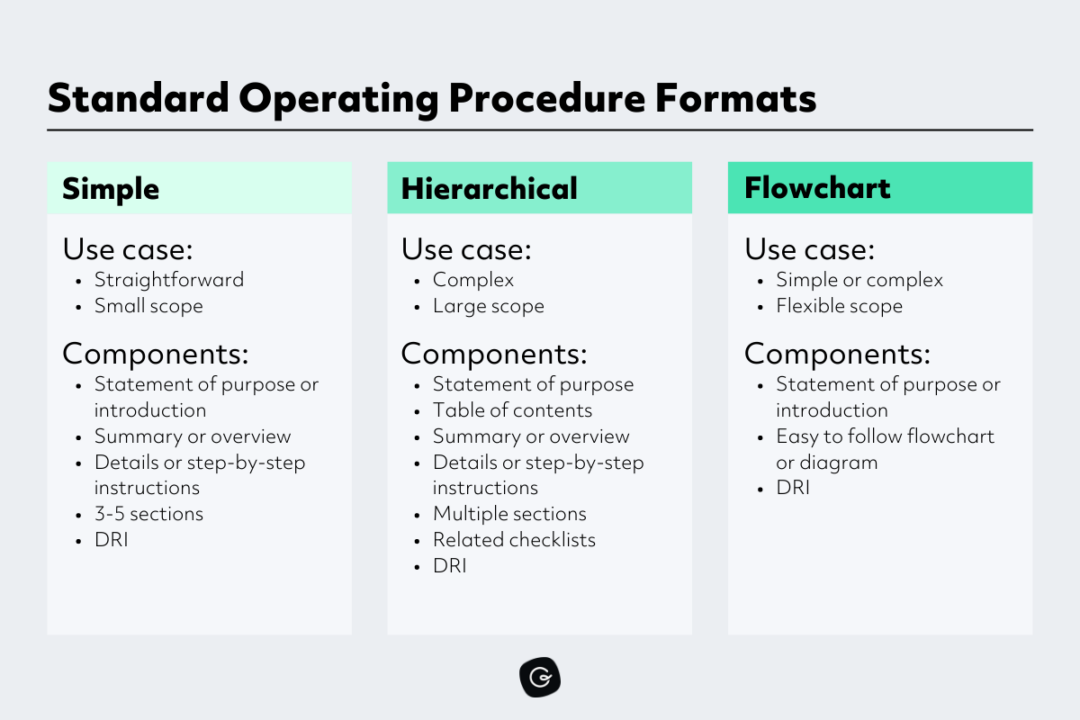Hiring New Sales Staff? Reduce Ramp Time With These 3 Standard Operating Procedures (SOPs)
Look under the hood of any MSP, and you’re bound to see some quirks.
The truth is that every organization does things a little bit differently.
But just because you do things a certain way doesn’t mean it needs to be chaotic or messy when it’s time to onboard new sales staff. You can ramp up your team more efficiently with standard operating procedures (SOPs).
We talk about frictionless selling as the future of B2B sales. Implementing SOPs brings a frictionless philosophy to your internal operations. New hires can get moving faster and feel autonomous sooner when clear instructions are available to guide them through their work.
Tools like quoting software that lets you set editing permissions and create as many proposal templates as you need to go a long way to make SOPs easy to develop.
Let’s look at standard operating procedures a little closer, and at the end, we’ll share 3 SOPs you’ll want to adopt for your sales team ASAP.
What’s a standard operating procedure (SOP)?
Wherever your organization has routine tasks, you have the opportunity for SOPs.
A standard operating procedure (SOP) is a documented set of instructions for a routine task. You can use SOPs all over the place: operations, administration, and marketing. SOPs should make things more efficient by providing your team with information to execute tasks and problem-solve. Greater efficiency = greater profitability.
Other benefits of SOPs include the following:
- Fewer human errors in routine tasks
- They’re a value-add for a business resale
- Greater autonomy for team members
- Flexibility for hybrid/remote and asynchronous work cultures
- Faster and more fulsome onboarding (more on that below, keep scrolling!)
SOPs work best when developed and organized uniformly, so if you’re just starting with SOPs, congratulations! You have the perfect opportunity to blast ahead with a framework that fits your organization.
Scribe contributor Adelina Karpenkova outlines the seven components of an SOP:
- Title: You can get as nerdy as you’d like here, but this includes a clear title, a date for when the document was last updated, and a description of the SOP.
- Identification: The author of the document.
- Scope: A summary of the breadth of the procedure. Where it starts, and when it’s deemed complete.
- Purpose: Here, you’ll describe the goal of the procedure.
- Glossary: Include definitions of any terms in the SOP that may need clarity.
- Procedure: This is the meat of the thing. Here’s where you describe the steps to complete the process.
- References: Add any supporting materials that could bring more depth or context to the SOP.

How SOPs speed up onboarding
There’s no question that remote and hybrid work has changed the way we sell B2B. People love closing Zoom and then moving their laundry from the washer to the dryer.
Your customers are remote, and your team is either remote, hybrid, or hoping you’ll let them get away from the office soon.
Asynchronous work, which is work that occurs when and where it suits the team member, goes hand-in-hand with remote and hybrid environments. It can seemingly throw a wrench into onboarding and other otherwise face-to-face activities. But aha! There are SOPs to circumvent the need for in-person training.
It might seem like SOPs reduce focus on onboarding, but it’s the opposite. Harvard Business Review contributor Ron Carucci emphasizes that a “standardized onboarding process is essential.” Up to 20% of staff turnover occurs in the first 45 days of employment, which Carucci suggests could be due to a lack of training. He recommends technical onboarding and defining “what good looks like.” SOPs can provide well-defined accountabilities and boundaries on authority, additional resources, and clarity on where autonomy begins and ends.
Three standard operating procedures for MSP sales
The sooner your new sales staff is knowledgeable, confident, and efficient, the sooner they’ll close deals. Lots of deals!
As noted by Brampton Small Business Enterprise Center, no two organizations will have an identical collection of SOPs. As we said at the beginning of this post: every organization is, um, unique.
But with your quoting software as a starting point, you can immediately put these SOPs into action. Implement these 3 SOPs to reduce ramp time and friction in your sales process.
1. Preparation of sales quotes
If you’re using quoting software to standardize quote templates, you’re already halfway to having a powerful SOP. Write your SOP to break down the steps to access the templates. Share additional resources for using the software. With all of the product, pricing, and quotation information already stored in your templates, the steps for new sales hires will leave little room for error.
That’s the beauty of standardizing processes: reducing human error and creating a consistent customer experience.
2. Manager approval of sales quotes
We know you want it all: autonomous sales staff, but with your final word on quality control. Quoting software with manager approvals makes it possible. It should be clear to your sales team how finalizing a quote works in your organization, so use the SOP structure to define the steps and describe the process.
Manager approvals allow you to customize approval policies for each employee, meaning you can create unique growth opportunities. “If all goes well, gradually increase the level of responsibility associated with each task,” says Carucci. “This will help build trust and show them that you are paying attention.”
Combine the flexibility of your quoting software with the clarity of an SOP to show your newest team members that you want them to succeed.
“Through this process, you can openly discuss gaps in their skill set and work to close them,” Carucci says.
3. Deal closure
After the quote has been approved, now what? Don’t leave your greenest and most keen employees guessing. Develop an SOP to take them through the steps of closing a deal. Closing could include e-signatures and payment acceptance.
Outline any incentives for sales performance in detail. With reporting and analytics baked into your quoting software, monitoring each employee’s activity is easy. Analyze trends in generated, won and lost quotes to get a sense of your sales team’s trajectory. These tools can be instrumental in probationary or review processes, and it helps to be transparent about how those analyses work.
Quoter + sales SOPs = a match made in heaven
It’s time to get into that standardizing mindset. Start with your sales funnel. Ask for a demo to see how Quoter can bring consistency, structure, and ease to your quoting process. It’s a win for you and your new and current sales team.
Add your entire team with one flat rate
Running a remote or hybrid workplace can create information silos that hurt productivity. Company-wide visibility into sales activity improves accountability and unlocks new sales opportunities through collaboration.

